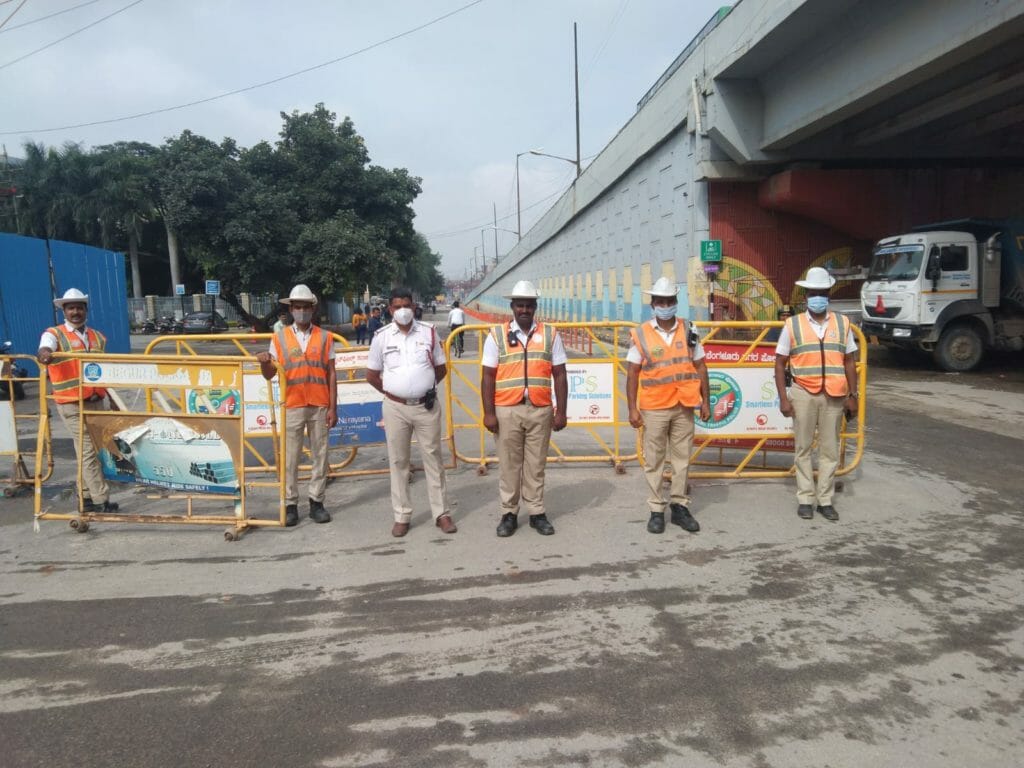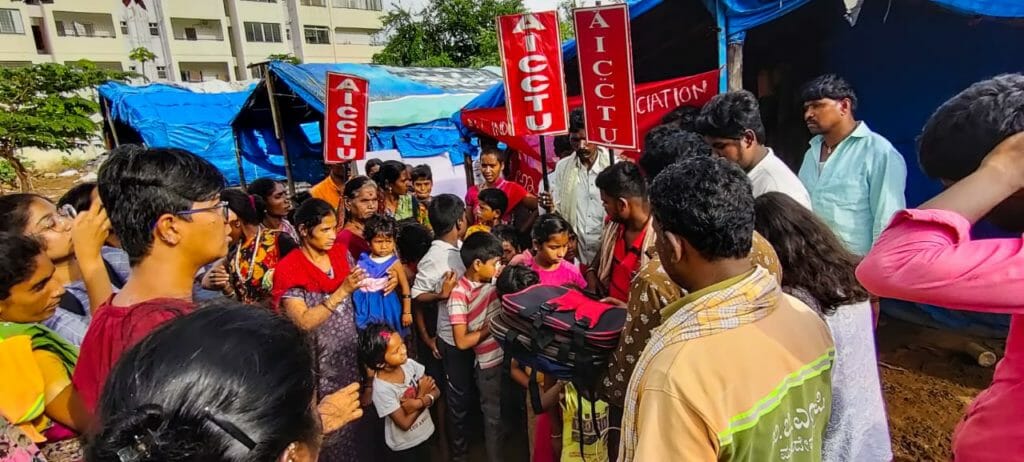On paper, Bengaluru has a decentralised framework for disaster management that puts urban local bodies at the helm of such efforts. But the recent floods in several parts of the city left residents of even high income gated communities in knee deep water for days.
But residents of the city’s low income settlements, especially informal settlements, were left largely to their own devices.
“When we ask the Bruhat Bengaluru Mahanagara Palike (BBMP), they say they’re waiting for the water to recede to visit the residential settlements and survey the damage,” says Nalini Shekar, co-founder of Hasiru Dala, questioning the municipality’s adequacy in providing immediate post-flood relief.
Response systems, as per the Disaster Management Act, 2005 which governs the timely and effective management of disasters are premised on decentralised plans of action and systems in place to effectively implement them. The National Disaster Management Authority maintains that urban flooding is distinct from rural flooding as urbanisation has led to concretisation of catchment areas, thus increasing the flood volumes by six times.
All fine on paper
Wards within the BBMP limits have been grouped under eight zones each headed by a Joint Commissioner tasked with disaster response and initiating relief operations. Outside these limits, officers from the Deputy Commissioner’s office handle the reflief work and compensation to be awarded for properties damaged by floods, while BBMP handles this within its own limits.
A 2015 Citizen Matters article had detailed the roles and responsibilities of all agencies responsible for the decentralised disaster management system.
The Standard Operation Procedure for urban flooding prepared by the Ministry of Urban Development directs the ULBs to set up Emergency Operation Centres (EOCs) and Crisis Control Rooms (CCR) in municipal wards. None of which happened during the recent floods in the city.
General action plans for every ward entail pre-monsoon, during-monsoon and post-monsoon preparedness. The former requires storm water entrances to be cleaned, land identified for temporary shelters and rehabilitation, and putting in place a malaria control and eradication program, among others.

“We (BBMP) are enlisting the help of the fire and police departments to pump out water, and we have temporarily housed some of the residents from informal settlements at shelters in Kadugodi,” says Munireddy D M, Chief Engineer of Mahadevapura zone, one the worst affected by the recent rains. Efforts to demarcate encroachments on stormwater drains and demolish them are underway, he adds.
Naveen Kumar, who works under the Deputy Commissioner for Bengaluru urban district said teams headed by Tehsildars have been deployed at the district level to survey the damage.
“The response (from BBMP) has been minimum in settlements across Mahadevapura, Bommanahalli and Parappana Agrahara,” countered Nalini Shekhar. “Only in Ward 52 in KR Puram, an inspection was carried out by the officials to assess the damage after which they said a compensation between Rs 10,000 to Rs 25,000 will be awarded based on the losses suffered”.
Prevention efforts nil
“Disaster management plans are made every year, but this year we experienced massive rainfall deviation,” says Naveen Kumar. “While we were expecting 5 mm rainfall, we received 800% more than this. Mahadevapura and KR Puram are technically ‘no-rain’ zones. This is the first time in 50 years that they have experienced rains at this scale”.
According to the post-monsoon SOP, officials are requested to draft an after-action report, implement a systematic programme for quick disposal of rainwater, evacuate affected persons to temporary shelters and ensure water and power supply in inundated areas.
While officers working both inside and outside BBMP limits insist that appropriate actions were taken to provide flood relief, their efforts are mainly ad hoc and do little to preempt risks of flooding or preventing it. Especially since this is hardly the first time streets and localities of the city have been flooded, and going by the city administration’s response, definitely won’t be the last.
Citizen Matters had previously investigated the city’s poorly planned and maintained storm water drains and the lack of data on Bengaluru’s drainage network which goes against the National Disaster Management (NDM) guidelines. The absence of periodic studies to assess the existing drainage network’s capacity despite several flooding events over the years is evidence of the lack of a flood preparedness system in place for Bengaluru.
Naveen Kumar, however, assures that they will not be caught off-guard the next time. “We will start preparations for the next monsoon in the summer itself,” he says. “We aim to draw up a report detailing the events of this year and what precautions can be taken for the next”. Having enlisted the help of the army and the State Disaster Response Force, he says all of them and the fire and police department have to be included in the plan. “We also have to mention the kind of equipment we need to tackle this”.
Pumping machines and boats are critical to flood management efforts. Even as officials said water was being pumped out from the flooded areas, Pinky Chandran, an independent journalist and researcher questioned if enough of these machines, which cost Rs 12,000 per day to hire, excluding labour costs, were deployed.
“There is little to no indication of risk mitigation or avoidance in the urban planning processes, which only accounts for the future in terms of growth in population and their need for housing,” states Garima Jain, a Gilbert White fellow at Arizona State University who works closely with Indian Institute for Human Settlements.
Read more: Bengaluru’s stormwater drain story: Lack of planning, design, maintenance
Community organisations fill the gaps
While risk assessment has its place, there should also be a vulnerability assessment conducted at the city or sub-city levels as the community is only as strong as its weakest link, points out Jaya Dhindaw, Program Director of Integrated Urban Development, Planning and Resilience at the World Resources Institute. “This will help determine how much personal capacity they (residents) have individually or as a community for resilience and adaptation,” she says. “This will also determine what resources are there at a community level, which can be leveraged to soften the blow of the disaster. This includes food, education, social networks, personal resources, etc”.
Hasiru Dala, an NGO that has been working with waste picker communities in Bengaluru, is one example of resource mobilisation by community organisations. “We have a good network among the communities across Bengaluru, and they can reach out to us in the case of emergency, ” says Pinky Chandran.

“Because of our continued engagement, we knew which of the settlements were flooded, like the smaller ones in Mahadevapura, Bommanahalli, Yelahanka constituency and near Magadi road,” says Pinky. This helped the organisation provide resources like tarpaulin, sanitary napkins, food, drinking water and other basic necessities immediately.
The All India Central Council for Trade Unions and All India Students Association too distributed education kits to the kids from the flood-affected families in the Brookefield settlement.
Grassroots organisations are an important part of decentralised disaster management, as their continued engagement with communities helps them identify those in vulnerable spots and work swiftly to mobilise resources and support for them. “During crises, these organisations get activated and help bridge the last mile accessibility to critical resources,” says Jaya. Their response is quicker as they already know the hotspots and how to respond when disaster strikes”.